With some wild weather, I reluctantly shelved my planned camping adventure and decided it was time to take the opportunity to tick a job off the list and reclaim the floor of my shed. There were three kayaks dominating a fair amount of floor space and the plan was to wall mount them.
With Christmas and the holiday period just around the corner I’m sure there will be plenty of new kayaks finding their way into homes around the country and these too will need storing, so this article is dedicated to exploring some storage options the three key accessories that are generally purchased along with a new kayak to get you started on your aquatic adventures. Let’s look at the PFD, paddle, and kayak seat and get started on clearing some floor space.
I often fish from paddle kayaks but even when I’m fishing from a pedal kayak I still ensure that I have a quality paddle at my disposal. Many new kayak packages include a paddle, unfortunately these paddles are often very basic and heavy, made with an aluminium shaft, and often without drip rings with a chunky rectangular shaped paddle blade. The lack of drip rings on the shaft, just above the paddle blades, will see water running down with each stroke into your lap, or down your arms. The aluminium shaft may not seem heavy at first, however after a few hours out exploring and fishing you will soon notice the difference a fibreglass shaft makes in comparison. The alloy shaft also becomes an issue in southern climates, transferring the cold into your hands and causing ache and discomfort. Finally, the chunky rectangular blades can do more harm than good physically and definitely don’t give you the return for effort of shaped kayak paddle blades. Many kayak retailers will allow you to pay a little more and step up to a better paddle from the start.
This doesn’t mean that you need to spend hundreds of dollars on a paddle, but if you spend around $150 on the workhorse paddle of our kit, the Carlisle Simply Magic or something similar, you will gain a paddle with a fibreglass shaft, glass fibre reinforced injection moulded polypropylene blades with an asymmetric cut and have a cupped shape for plenty of power and an efficient stroke. This translates to a reasonably light paddle that is virtually bulletproof, a pleasure to paddle with and you don’t have to be afraid of pushing off from boat ramps and oyster rocks, or pushing it into the sand or weed flats to hold position. This paddle is ideal for beginner to intermediate paddlers and we have been giving ours a hiding for nearly a decade.
In our kit we have paddles worth a few hundred dollars that feature carbon shafts and multi-laminate fibreglass or carbon blades. These paddles are an absolute pleasure to paddle with, they’re super lightweight and you appreciate this when using them for long range missions offshore. I avoid using these paddles though when bashing through the skinny water or using the paddle to push off or anchor the kayak in the myriad of rocks, oysters, rubble beds, mangroves and snags of the rivers and estuaries, due to the relative fragility of high performance blades.
Some kayaks come fitted with deluxe seating systems that provide plenty of adjustment, support and comfort to make your day on the water more comfortable, enjoyable and productive. Often kayak packages come with a basic paddle and also a basic seat with minimal adjustment and padding, so it’s worth upgrading the seat if the one that comes with the kayak doesn’t look up to the task.
For a small addition to the price you may be able to step up to a seat with more adjustment points, better quality construction and thicker, higher density foam for cushioning. This can save you money in the long run, if after a couple of trips you purchase a better quality seat and the original one finds itself gathering dust and cobwebs in the depths of the shed.
Buy a quality PFD and wear it. Should something go wrong, it’s not going to do you any good packed in your hatch. I have been a long time wearer of the inflatable style PFD, due to the lightweight and unobtrusive design, but after replacing a couple of rusty canisters I am beginning to lean toward the foam style PFD as a preferred option. The foam PFD doesn’t require you to pull a cord once in the water, nor does it rely on a canister for inflation. There are now more kayak angler friendly versions with a design that allows more movement, no bulky foam on the lower back to interfere with seating and plenty of storage pockets and attachment points for gear. Oh, and did I mention – wear it!
Now, you’ve unwrapped your new kayak, or like me they’ve been haunting the floor space in your shed for years, it’s time to work out where to store them. Manufacturers recommend that you do not store them flat on their hull on hard surfaces as this can cause flat spots, do not suspend them by their ends or carry handles as this can create a banana shaped kayak. Do not store them on a trolley as this can concentrate stressing and cause hull damage.
Experts recommend storing them on the strongest point of the kayak by storing them on their side, either on the ground, or by suspending on their side using a padded cradle or webbing strap that distributes the load. These cradles or straps should be toward stronger sections of the kayak and not toward the ends, again to avoid the ‘banana’ kayak.
For my wife’s small, lightweight kayak I opted a pair of Aquaracks. These racks are simple to install. I inserted a length of timber into the framework of the shed to reinforce it, measured, drilled and used the supplied hardware to attach each rack. Being an open rack I am able to lift my wife’s kayak above my head, climb the ladder a few steps and insert the kayak into the Aquaracks. One kayak out of the way.
I also selected Aquaracks for my big offshore paddle yak. They are rated to 80kg so are well and truly up to the task and a two person lift made it easy for me to lift one end onto one of the racks and then assist Sheri to lift the other end onto the second rack. Simple, secure, supportive and if we were ever to move house there are only four screws to remove the Aquaracks and rehouse them.
For my crusty, sit-inside kayak, that sees plenty of action, I opted for the RailBlaza StarPort Wall Sling as it’s simple for me to operate by myself. Simply lift one end of the kayak, slide the strap around and clip it in, then move to the other end and lift it, slide the strap around and clip it in. This system also lays flat against the wall when not in use –in case we need to store a vehicle in the shed. The StarPort Mounts can be unlocked so that the WebEyes and straps can be removed completely. I currently have another StarPort Wall Sling mounted high on the opposite shed wall to store my large Bazooka rod tube.
This system is again quick and easy to mount, with two screws per StarMount and then simply insert the Webeyes into the mount and slide the lock closed. It took me about twenty minutes to measure, drill, install and hang the kayak. The weight rating is 30kg per sling (total 60kg), so it will handle most kayaks, canoes and SUPs with ease.
With the wall full and only my pedal kayak left to trip over I am currently investigating the range of hoist systems that are on the market. Not only could I free the last area of floor space, but by lifting the kayak up toward the insulated ceiling of the shed I could also back the vehicle in and lower the kayak straight onto the roof racks, saving a lift at one end.
I hope Santa brings you something fishing or kayak related for Christmas and that you find some time to get out on the water during the holiday period. If your time off happens to coincide with average weather though, maybe it’s time to visit your local tackle store for a new lure or two, or head out to your shed to sort your gear for future adventures, hang those kayaks and find some floor space.
See you on the water!
Reads: 2917
A durable paddle is a must have when battling fish in snaggy country.
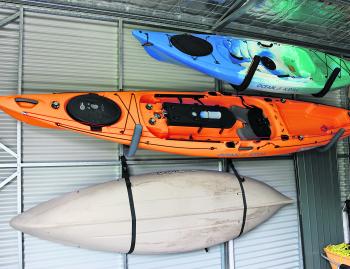
With all the kayaks out of the way, we’ve finally got enough floor space to find a new project – maybe some new yaks!

A quality paddle makes your time on the water more enjoyable. A selection of the author's paddles.

A comfortable seat is essential for multi-day missions.
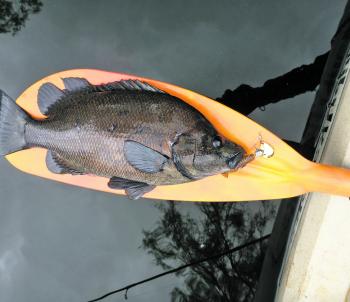
A quality sooty on a quality paddle!
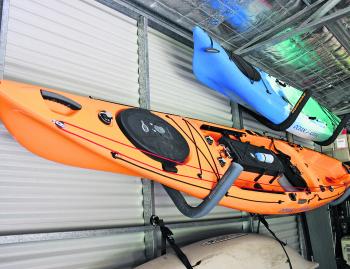
Aquaracks are rated to 80kg and suitable for craft of all sizes.
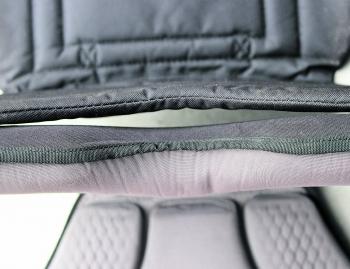
Compare the base of the seat from the package (top), and the author's upgrade (bottom).
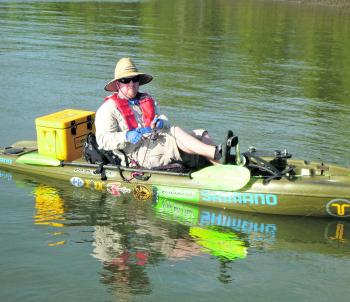
Inflatable PFDs are popular due to their lightweight and unobtrusive design.
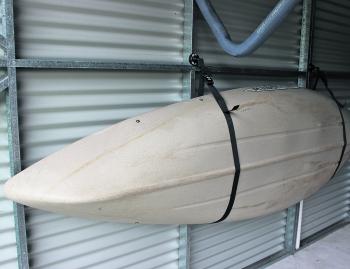
The creek basher secured on the RailBlaza StarPort Wall Sling.
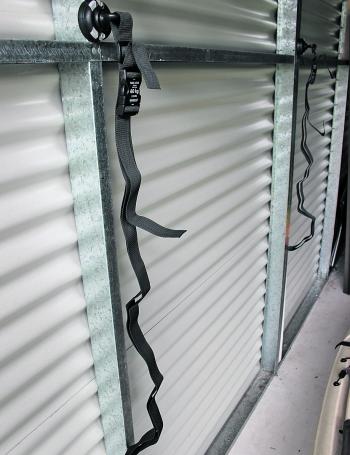
As you can see, there is very little hardware protruding from the wall once the kayak is removed.




